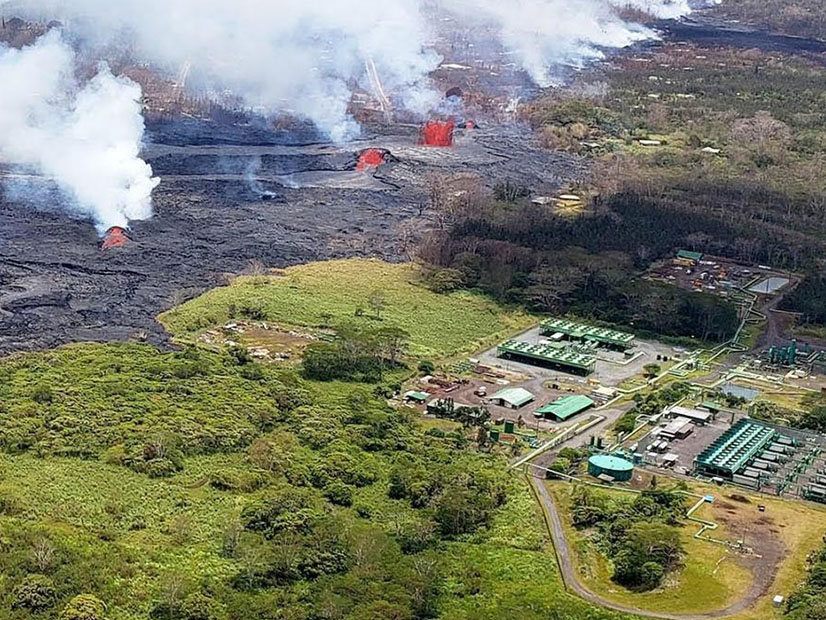
The operator of Hawaii’s only geothermal plant is working to bring the facility back to full capacity after it was shut down by a volcanic eruption three years ago.
Ormat Technologies subsidiary Puna Geothermal Venture (PGV) discussed its efforts to ramp up its geothermal plant on the Big Island during a public meeting Wednesday.
When running at its full 38 MW of capacity, the PGV plant accounts for about 30% of the Big Island’s renewable energy.
The plant was shut down in 2018 when an eruption from the Kīlauea volcano caused a lava flow that destroyed access roads and several sections of the plant. The company repaired enough of the facility to bring it back online last November, but at limited capacity.
“Currently the plant is producing 25 to 26 MW,” Zachery Adachi, PGV operations supervisor, said during the meeting. “We have nine of 11 [Ormat energy convertors] online right now. Out of the two that are down we have one that is down for annual maintenance,” while the other unit is “still under recovery from the whole lava event.”
Adachi noted the company is “just waiting on parts” for the energy converter still under recovery and expects it to be operational “in a month.”
Responding to a question from a community member, Ormat Senior Director of Hawaii Affairs Michael Kaleikini said that PGV has no construction plans for the next few months but will be performing maintenance on its KS5 production well that is still covered by lava.
Kaleikini explained that one reinjection well had also been covered by lava. “We checked the mechanical integrity, received all the proper approvals to use it again, and it’s back in operation. So we’re crossing our fingers that KS5 will be available for use in the near future.”
Kaleikini also pointed to the value of geothermal energy relative to solar energy, saying, “The solar farms with battery storage do contribute to the state’s mandate, but their technology is not available 24/7 like geothermal.”
Other community questions centered on the safety of the plant and if damage caused by the eruption will cause any unwanted emissions of hydrogen sulfide, a toxic volcanic gas. Kaleikini said that PGV is a closed-loop facility, meaning it does not have “continuous emissions of hydrogen sulfide” and thus should not pose a threat. He also explained that PGV is responsible for notifying the state of any dangers.
PGV and Hawaiian Electric Light Co., a subsidiary of Hawaiian Electric Co., are currently negotiating an amended power purchase agreement to increase the facility’s capacity from 38 MW to 46 MW. According to an Oct. 8 letter from PGV to the state’s Office of Planning, the amended PPA will also allow PGV to “enhance its operational efficiency” so that it can “displace annually approximately 10 million gallons of fossil fuel.”
Those efficiency gains would consist of replacing the plant’s 12 existing generating units with three newer, more efficient units that will “use the same amount of geothermal resource as is currently used.”

